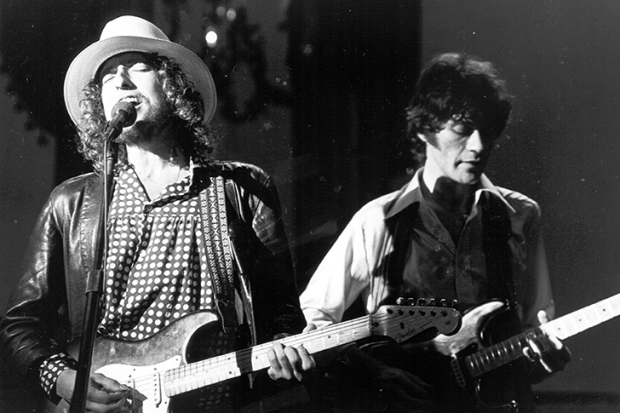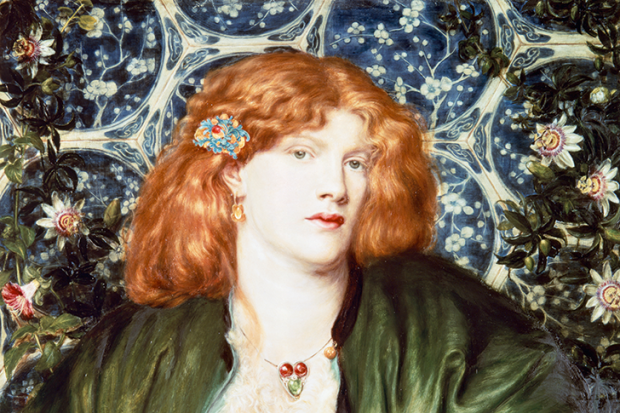This past autumn has felt more uncomfortable than usual to be a woman looking at men looking at women. From Hillary Clinton’s ‘overheating’ episode (‘Does she have Parkinson’s? Is she wearing a catheter?!’) to Donald Trump’s assessment of female limbs as if they were building materials, election season finished with the male members of our new first family peering over the voting booth to check on their wives.
Siri Hustvedt has long been interested in how the way we look at the world
privileges certain political, gendered, artistic and scientific agendas, while excluding others. These dynamics are at play between a reader and a writer, a doctor and a patient, a neuroscientist and the brain she studies. A writer of novels and non-fiction (on topics from sculpture to cybernetics), Hustvedt also lectures in psychiatry and speaks eloquently about her own medically
unexplained neurological ‘shakes’. Rather a ‘perpetual outsider’ than an interdisciplinary scholar, she likes to ‘spot what the experts often fail to question’. Hustvedt’s work wonders what happens — rhetorically and physiologically — when we change our minds.
This most recent book of essays is divided in three, a structure more willed than required: art criticism (Picasso, Koons, Mapplethorpe, Sontag, Bourgeois); a history of mind science; and thoughts on ‘the human condition’. What unites the volume is the central role of emotion in the practice of science as well as art, and critique of its reputation as a female ‘impurity’ that stains objectivity. She wants the library to be more like a laboratory (attending to the neural activity of creation and reception), and the laboratory more like a library (invested in language and aesthetics).
Hustvedt’s opponents share a lineage from Descartes, who pitched the thinking mind against the sensing body, to Pinker at Harvard and Dawkins at Oxford. She accuses these modern popularisers of psycho-evolution of shoring up weary gender biases of male ‘hardwiring’ for aggressive and technical tasks, while women are primed for softer, empathic employment. Their ‘evidence’ is still regurgitated over canapés at cocktail parties. Hustvedt particularly disdains the resilient metaphor of the mind as a ‘neural computer’, programmed with genes which are set in motion like dominoes at the finger-flick of conception.
Against this grain, Hustvedt aligns herself with Margaret Cavendish, a 17th- century natural philosopher. Cavendish rejected Cartesian dualism in favour of attributing ‘mentality to all matter, including vegetables and minerals’ and authority to feelings both muscular and visceral. For Hustvedt’s ‘I know the truth when I feel it’ approach, a revival of Cavendish’s thought might address today’s ‘explanatory gap’ as to how neural pathways connect experience with physical symptoms. Examples of somatoform disorders and the placebo effect counsel against defining ‘unreal’ medicine as that which we currently cannot measure.
But Hustvedt is herself guilty of cherry-picking evidence and misleading metaphor. She recalls how a neuroscientist told a ‘befuddled psychoanalyst’ that babies are ‘not conscious’, as if that were a characteristic statement differentiating the two professions. Belittled earlier on as scientific reductionism, fMRI brain scans are used to endorse Hustvedt’s arguments about the ‘neural participation’ of professional dancers as they watch others perform moves they too have mastered. Hustvedt would do well to follow the advice she cites that ‘histories of philosophy and science are often forgotten in a rush to believe what we want to believe’.
It is unclear to whom Hustvedt speaks, as a feminist audience will be very familiar with these ideas. An ‘adaptive grandiosity’ (her words) makes the essays come across as if anticipating attack. ‘I read enormously,’ she insists, often reiterating her deep familiarity with psychoanalytic theory. She even recalls a small dinner party where Susan Sontag said Hustvedt’s was ‘the best essay on The Great Gatsby ever written’. Speaking with the individuality of an artist, she mocks the academy’s objection to using the first person. But what she sees as obfuscation is instead collective deference. To be shy with ‘I’ in the sciences and humanities is to speak within the company of minds that fed you, rather than above or beyond them.
A body of American non-fiction is emerging that was written in the months before election day and will be published after it. These works share tones suited to a time reassured of society’s growing openness. Hustvedt’s book closes with a request for ‘humility’ in scientific inquiry. She recently wrote in the Guardian that we have ‘entered a time of humiliation’. Humility may seem impossible when humiliation threatens. Calls have already come for an allied scientific front against Trump which will not risk doubting its own claims. But science must resist compromising its humble values of self-interrogation and transparency, or else further sully public trust in its expertise.
Got something to add? Join the discussion and comment below.
Get 10 issues for just $10
Subscribe to The Spectator Australia today for the next 10 magazine issues, plus full online access, for just $10.
You might disagree with half of it, but you’ll enjoy reading all of it. Try your first month for free, then just $2 a week for the remainder of your first year.














Comments
Don't miss out
Join the conversation with other Spectator Australia readers. Subscribe to leave a comment.
SUBSCRIBEAlready a subscriber? Log in